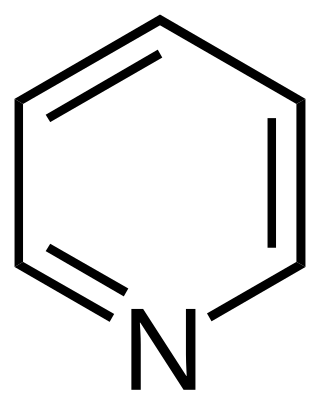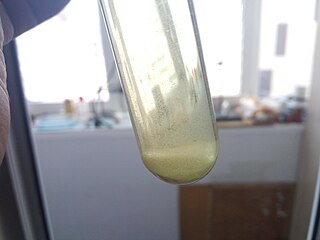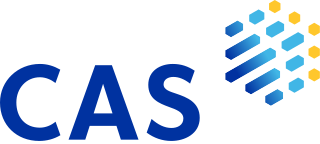External links
| International | |
|---|---|
| National | |
| Formation | July 7, 1946 |
|---|---|
| Type | Learned Society |
| Headquarters | Seoul, Seong-buk gu |
| Location | |
Official language | Korean |
President | Hyun-Joon Ha |
| Staff | About 7000 |
| Website | www |
| Korean Chemical Society | |
| Hangul | 대한화학회 |
|---|---|
| Hanja | 大韓化學會 |
| Revised Romanization | Daehan Hwahakhoe |
| McCune–Reischauer | Taehan Hwahakhoe |
Korean Chemical Society was founded on July 7,1946. It is a non-profit corporation that aims a contribution toward a chemical scholarship,technological development,education,education,and the spread of chemical knowledge. There are about 7,000 members active around university,laboratories,industry,and schools,and there are about 140 organization and about 30 special member companies participating in KCS.
KCS has steering committee,including 12 branches,12 departments,3 editing committee,and board of trustees. KCS publishes journals including “The Journal of Korean Chemical Society”,“Bulletin of Korean Chemical Society”(english,monthly,SCI since 1981),“Chemistry:An Asian Journal”,“Physical Chemistry Chemical Physics”,and “ChemWorld”,the newsletter of KCS. Korean Chemical Society continuously works with other international chemical societies. KCS is also a member organization of IUPAC and FACS.
Bulletin of Korean Chemical Society is a flagship journal of KCS representing basic and applied chemical science. It appeals to broad international readership in the chemical community. As an official journal of KCS,it reaches out to the chemical community worldwide. It is strictly peer-reviewed and welcomes papers written in English. The Bull. Korean Chem. Soc. Is jointly published with Wiley-VCH. It is read by chemist of all disciplines. This journal is on a SCI index. It means that this journal is globally recognized,
KCS holds annual meetings and several conferences. KCS also hosts KChO,the Korean Chemistry Olympiad. KChO is a well-known chemistry competition in Korea. KChO is also a team selection test of Korean team in IChO. KChO is composed of two summer schools and two winter schools. Every high school students (starting at 16 yr) can participate in school entering exam. After entering seasonal schools,students get lesson from professors and takes exam. Also,there are experimental test in seasonal schools. For further information,visit Korean Chemistry Olympiad. This is a part of Chemical Education and Outreach Program. Also,compiling chemical terms and nomenclature of chemical compounds in Korean is another part of this program,which KCS do as a national affiliated organization of the IUPAC.
Furthermore,in Science day of Korea,April 21,which was designated in 1967 by government,KCS holds “Contest for Chemical Poetry and Painting”for secondary school students,and “Contest for Chemical Poster”for elementary school and secondary school students. Award-winning works can be searched from http://new.kcsnet.or.kr/contest_poem_result.
KCS established “Carbon Culture Award”in 2012 to recognize and understand the importance of the Carbon.
| Name | Term |
|---|---|
| KCS Merit Award | Triennial |
| Academic Excellence Prize | Annual |
| Award for Excellent Research Paper | Annual |
| Award for the Advancement of Science | Annual |
| Award for the Advancement of Industry | Annual |
| Award for the Advancement of Education | Annual |
| Award for Chemical Education | Biennial |
| Award for Excellent Chemistry Teachers | Annual |
| Award for Doctoral Dissertation | Annual |
| Excellent Poster Presentation Prize | Biannual |
| Award for CEO in Chemistry | Annual |

In organic chemistry, an amide, also known as an organic amide or a carboxamide, is a compound with the general formula R−C(=O)−NR′R″, where R, R', and R″ represent any group, typically organyl groups or hydrogen atoms. The amide group is called a peptide bond when it is part of the main chain of a protein, and an isopeptide bond when it occurs in a side chain, as in asparagine and glutamine. It can be viewed as a derivative of a carboxylic acid with the hydroxyl group replaced by an amine group ; or, equivalently, an acyl (alkanoyl) group joined to an amine group.

A heterocyclic compound or ring structure is a cyclic compound that has atoms of at least two different elements as members of its ring(s). Heterocyclic organic chemistry is the branch of organic chemistry dealing with the synthesis, properties, and applications of organic heterocycles.

The International Union of Pure and Applied Chemistry is an international federation of National Adhering Organizations working for the advancement of the chemical sciences, especially by developing nomenclature and terminology. It is a member of the International Science Council (ISC). IUPAC is registered in Zürich, Switzerland, and the administrative office, known as the "IUPAC Secretariat", is in Research Triangle Park, North Carolina, United States. IUPAC's executive director heads this administrative office, currently Greta Heydenrych.

Carbonic acid is a chemical compound with the chemical formula H2CO3. The molecule rapidly converts to water and carbon dioxide in the presence of water. However, in the absence of water, it is quite stable at room temperature. The interconversion of carbon dioxide and carbonic acid is related to the breathing cycle of animals and the acidification of natural waters.

In organic chemistry, the cycloalkanes are the monocyclic saturated hydrocarbons. In other words, a cycloalkane consists only of hydrogen and carbon atoms arranged in a structure containing a single ring, and all of the carbon-carbon bonds are single. The larger cycloalkanes, with more than 20 carbon atoms are typically called cycloparaffins. All cycloalkanes are isomers of alkenes.

Iodoform is the organoiodine compound with the chemical formula CHI3. It is a pale yellow, crystalline, volatile substance, with a penetrating and distinctive odor and, analogous to chloroform, sweetish taste. It is occasionally used as a disinfectant.

The American Chemical Society (ACS) is a scientific society based in the United States that supports scientific inquiry in the field of chemistry. Founded in 1876 at New York University, the ACS currently has more than 155,000 members at all degree levels and in all fields of chemistry, chemical engineering, and related fields. It is one of the world's largest scientific societies by membership. The ACS is a 501(c)(3) non-profit organization and holds a congressional charter under Title 36 of the United States Code. Its headquarters are located in Washington, D.C., and it has a large concentration of staff in Columbus, Ohio.
In chemical nomenclature, the IUPAC nomenclature of organic chemistry is a method of naming organic chemical compounds as recommended by the International Union of Pure and Applied Chemistry (IUPAC). It is published in the Nomenclature of Organic Chemistry. Ideally, every possible organic compound should have a name from which an unambiguous structural formula can be created. There is also an IUPAC nomenclature of inorganic chemistry.
The International Chemistry Olympiad (IChO) is an annual academic competition for high school students. It is one of the International Science Olympiads. The first IChO was held in Prague, Czechoslovakia, in 1968. The event has been held every year since then, with the exception of 1971. The delegations that attended the first events were mostly countries of the former Eastern bloc and it was not until 1980, the 12th annual International Chemistry Olympiad, that the event was held outside of the bloc in Austria. Up to 4 students for each national team compete around July in both a theoretical and an experimental sections, with about half of the participants being awarded medals.

Chemical Abstracts Service (CAS) is a division of the American Chemical Society. It is a source of chemical information and is located in Columbus, Ohio, United States.
The United States National Chemistry Olympiad is a contest held by the American Chemical Society (ACS) used to select the four-student team that represents the United States at the International Chemistry Olympiad (IChO).
Dimethylformamide, DMF is an organic compound with the chemical formula HCON(CH3)2. Its structure is HC(=O)−N(−CH3)2. Commonly abbreviated as DMF, this colourless liquid is miscible with water and the majority of organic liquids. DMF is a common solvent for chemical reactions. Dimethylformamide is odorless, but technical-grade or degraded samples often have a fishy smell due to impurity of dimethylamine. Dimethylamine degradation impurities can be removed by sparging samples with an inert gas such as argon or by sonicating the samples under reduced pressure. As its name indicates, it is structurally related to formamide, having two methyl groups in the place of the two hydrogens. DMF is a polar (hydrophilic) aprotic solvent with a high boiling point. It facilitates reactions that follow polar mechanisms, such as SN2 reactions.
Neopentane, also called 2,2-dimethylpropane, is a double-branched-chain alkane with five carbon atoms. Neopentane is a flammable gas at room temperature and pressure which can condense into a highly volatile liquid on a cold day, in an ice bath, or when compressed to a higher pressure.
Chemical nomenclature is a set of rules to generate systematic names for chemical compounds. The nomenclature used most frequently worldwide is the one created and developed by the International Union of Pure and Applied Chemistry (IUPAC).

The Commission on Isotopic Abundances and Atomic Weights (CIAAW) is an international scientific committee of the International Union of Pure and Applied Chemistry (IUPAC) under its Division of Inorganic Chemistry. Since 1899, it is entrusted with periodic critical evaluation of atomic weights of chemical elements and other cognate data, such as the isotopic composition of elements. The biennial CIAAW Standard Atomic Weights are accepted as the authoritative source in science and appear worldwide on the periodic table wall charts.
The Pancyprian Union of Chemists is the chemical society for Cypriot chemists. It comprises a board of nine members which is elected every two years by the General Assembly of the PUC. The PUC was founded in 1960. This coincides with the period during which the Republic of Cyprus was established. The PUC currently has over 550 members. It also publishes the Greek language magazine '“Chemica Nea'”, or the Chemical News Magazine in English. This magazine is distributed quarterly to PUC members plus approximately one hundred additional subscribers throughout Cyprus and Greece.

The Chinese Chemical Society is a professional society of chemists headquartered in Beijing. It is part of the China Association for Science and Technology. Current membership is at around 55,000.
Korean Chemistry Olympiad(KChO,한국화학올림피아드) is a chemistry olympiad held by Korean Chemical Society (KCS). It is also one of the Korean Science Olympiad. The top four contestants of the KChO can join the International Chemistry Olympiad(IChO).
William Barry Jensen was an American chemist and chemical historian.

Rachel Mamlok-Naaman is an academic based in Israel. She specializes in chemistry education.